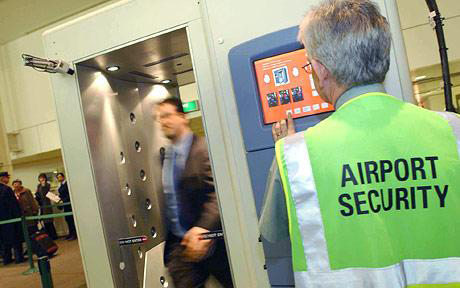
IP Liftoff
Airports seeing major shift of IP video surveillance; three trends that are piloting the change
- By Anthony Incorvati
- Mar 01, 2013

Airports have broken the analog barrier. No longer are airport directors and security executives arguing the merits of analog vs. IP. While the latest research reports indicate that the airport market is around 50 percent converged (IMS Research), the market segment is moving forward with major IP projects at breakneck speeds across all sizes of airports.
At the project planning table for many of these new surveillance initiatives, there seems to be three major trends emerging that wouldn’t have been possible two or three years ago.
First, the sheer size of new camera installations are staggering. Airports that had a couple hundred cameras to cover the entire property in the mid- to late- 2000s are now growing their systems to thousands of IP cameras. What’s causing such a dramatic trajectory?
Second, security and TSA are no longer the sole drivers behind camera installs. Different departments are showing an interest in leveraging the systems for improved operations. Even airlines are getting into the act. What types of nonsecurity uses are driving this interest?
Third, the interest in using the system for more than just security has brought many new stakeholders to the planning table with their own needs and ideas. Who are they? What are they asking for?
Here is what airport leaders have been saying and, more importantly, doing.
Sky Rocketing Builds: from Hundreds to Thousands
The upsurge of number of cameras per airport is exploding—and this trend isn’t reserved just for the major hubs.
In the United States, TSA classifies the nation’s airports into one of five categories: X, I, II, III and IV. These classifications are based on factors such as takeoffs and landings annually, the extent of passenger screening and overall threat level considerations. In general, Category X (“ex,” not “ten”) airports have the largest number of passenger boardings and security threat considerations. Category I (“one”) is the next highest ranking and Category IV (“four”) is the smallest.
Since Category X airports are considered the most appealing targets for terrorism and criminal activity, this is naturally where the largest surveillance upgrades are taking place from a pure numbers perspective. Los Angeles (LAX), for example, recently tripled the size of its video surveillance system from less than 1,000 cameras to more than 3,000.
Category I and II airports also are building bigger systems with more networkconnected cameras. An international airport on the east coast that had less than 100 analog cameras just eight years ago has a long-term plan in place for more than 2,000 IP cameras. In the near future, expect even the smallest regional airports to increase their camera counts, as well as the cost of IP technology and network storage continues to decrease.
What’s causing the surge? Looking from the outside in, it’s easy to assume that the threat of terrorism is the driving force. Major security threats and the resulting increase of government grants are the main catalysts for the change, but the technology shift from antiquated analog CCTV to IP video is the enabler.
Scalability benefits of IP over analog are obvious and allow airports to grow their systems as needed. But that doesn’t answer the question of accelerated growth in network video infrastructure. The real answer is because airports are tapping into the value of technology due to three improvements:
Bandwidth build-outs. Bandwidth is becoming cheaper and less limited.Travelers today expect Wi-Fi in every terminal. Tenants with properties inside the airports—namely retailers and restaurants—need a network infrastructure to run business operations. In fact, some airports are building carrier class networks and acting as a service provider for their tenants piggybacking on 10-plus Gigabit backbones. With terminal-to-terminal wiring, it’s much easier today to find a network drop and add IP cameras when a need arises.
Image quality. Frankly, the poor image quality of analog video meant that it was only ever reviewed when absolutely necessary. Video coverage was added only at critical checkpoints to monitor who went where and when, and even then the pictures were difficult to see. With today’s HDTV and multimegapixel cameras, other airport stakeholders are taking note of the quality and realizing what this means for their jobs, leading to the request for an increased number of IP cameras.
Sophisticated software. Managing hundreds or thousands of cameras is impossible for any human, so the video management software selection is paramount. Operators can easily access the video they need through smart search features and mobile access. If airport security must track a subject, properly configured software solutions can help reconstruct the sequence of events from camera to camera by stitching together footage. Lastly, with today’s IP image quality providing the necessary pixel data, the top software vendors are developing effective analytics to improve security and operational intelligence.
New Uses: Operations and Maintenance Want In
With such high quality IP cameras and software programs today, some might ask, “If the resolution and intelligence are so much better, shouldn’t airports be able to do more with less? Wouldn’t that mean a decrease in camera counts?” Here, we’re seeing the rare trend of doing more with more.
Because image quality and usability of analog systems is so poor and cumbersome, maintaining the system often becomes a burden on an airport’s resources. Airport security and TSA leverage the video for high-risk areas, but using the system was not exactly a coveted task. That perception is changing with IP, and it’s resulting in multi-dimensional uses in adjacent departments.
In addition to the historical power users of IP video surveillance, such as the TSA, airport security and Customs and Border Protection, emerging users, like operations and maintenance have entered the room. The main purpose for surveillance is still security, but these additional departments are using video more proactively and in unique ways. Surveillance of baggage handling systems is being used to help detect a downtime issue and bring the system back to operational effectiveness, and airports can keep an extra eye on work performed by external contractors.
Major U.S. airlines also are purchasing and installing their own cameras at gates and ramps to better manage the operational effectiveness needed for ontime departures with analytics like people counting and traffic flow management. Flight delays can be caused by any number of players, from the airline to food vendors to the airline refueling staff. If a flight is delayed, the video can be valuable data to clear the airliner of any wrong doing.
In fact, airport use of IP video mirrors the retail industry in many ways. While loss prevention was the main driver of years past, retail sales, marketing and operations departments are finding new ways to leverage video data and analytics. And, since major airports have a mall-like atmosphere, actual retail uses of video abound. Individual tenants can leverage the airport’s network to add their own cameras and use analytic software to improve their own sales operations with heat mapping, customer flow and queue-counter analytics.
The Deal: From Solo Pilots to a Whole Crew
With so many stakeholders now taking an interest in growing surveillance systems in airports throughout North America, the number of seats at the planning table has increased. In the past, integrators and their vendor partners typically dealt with only the security department. This group was driving much of the decisions for developing the surveillance system. Today, however, there’s a very influential co-pilot involved: IT.
We talk about airports installing thousands of cameras. In today’s IP world, it’s not 4,000 cameras they’re installing. It’s 4,000 computers being added to the network. More often the chief security officer (CSO) or director of IT is involved in the surveillance purchasing decision, and even becoming the main driver in the larger airports for the products they choose.
While IT is playing a major role across all categories of airports, the most sophisticated projects will include an entire crew in the buying process. The airport director, along with maintenance and operations staff, should be participating in the discussion—that is, if they understand the potential of cross-functional IP video surveillance. If they aren’t involved, the full potential of an IP system could be lost.
Each department will have their own needs, pain points and lofty goals. So, the surveillance system must be designed with everyone’s input in mind. New best practices dictate that proposals and plans are segmented out by department need so that nothing is missed in the design phase. If done in a comprehensive manner, many surveillance synergies will arise that allow the installation team to simultaneously accomplish multiple goals.
Flying High with IP Video
Airport security is one of the hottest issues of our lifetime. Passengers want to be assured that everything possible is being done for their protection, but they want it done in a way that doesn’t disrupt their travel plans. It’s a fine line to walk, but with highquality, intelligent IP video systems, airports are now using their systems to do both.
This article originally appeared in the March 2013 issue of Security Today.